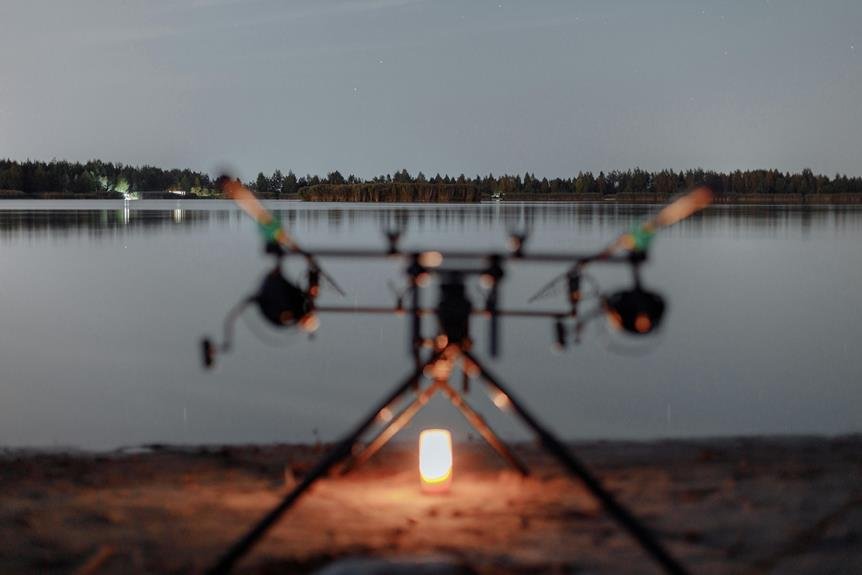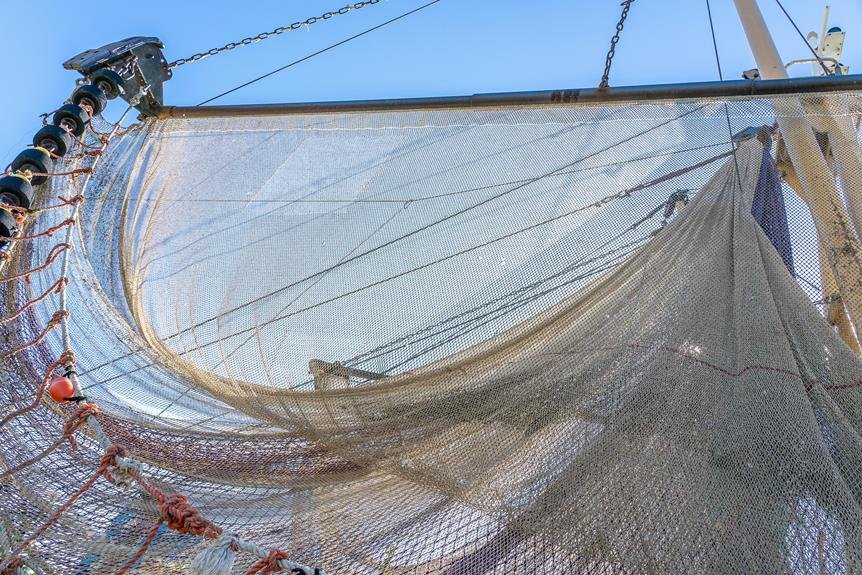When it comes to fishing, we rely on reliable loop knots to connect our lines and leaders to rigs or lures. Mastering these essential knots is critical to our fishing success. There are several types of loop knots, each with its strengths and weaknesses, and choosing the right one depends on the fishing style and gear used. From the versatile Surgeons Loop to the easy-to-tie Figure-Eight Loop, understanding these knots helps us make informed decisions. As we explore the world of fishing loop knots, we'll discover the techniques and tips to elevate our fishing game – and uncover the secrets to a successful catch.
Key Takeaways
- Reliable loop knots are essential for connecting lines and leaders to rigs or lures in fishing, and different knots serve specific purposes.
- The Surgeons Loop is a versatile and strong loop knot suitable for connecting lines and leaders, and can be tied in various ways.
- The Figure-Eight Loop Knot is a reliable and easy-to-tie knot for making loops in the middle of a line, ideal for heavy-duty fishing applications.
- Mastering fishing knots, including loop knots, is essential for a successful fishing trip, and selecting the right knot depends on the type of fishing, lure or hook, and line material.
- Practicing tying loop knots, starting with short practice sessions and using fishing knot tools, aids in mastering the knots and improving fishing skills.
Understanding Loop Knots Basics
When we're on the water, we need reliable loop knots to connect our lines and leaders to rigs or lures, and understanding the basics of these knots is essential for a successful fishing trip. There are several types of loop knots, each with its own strengths and weaknesses. We commonly use Surgeons Loop, Figure-Eight Loop, and In-Line Dropper Loop knots, depending on our fishing style and gear. The materials we use for our knots also matter – we prefer high-quality monofilament or fluorocarbon lines that can withstand water pressure and friction. By understanding the basics of loop knots, we can choose the right knot for the job and tie it securely to guarantee a successful catch.
Surgeons Loop Knot Tutorial
Let's get started with the Surgeons Loop Knot Tutorial, where we'll break down the steps to tie this reliable and strong loop knot that's perfect for connecting lines and leaders.
The Surgeons Loop is a versatile knot that's easy to tie and offers excellent knot strength. Here's what you need to know:
- The Surgeons Loop can be tied in various ways, including the standard Surgeons Loop and its variations, such as the Double Surgeons Loop.
- To test the strength of your Surgeons Loop, perform a knot strength test by pulling both ends of the line.
- The Surgeons Loop is suitable for both monofilament and fluorocarbon lines.
- Practice tying the Surgeons Loop to master it and make it a go-to knot in your fishing arsenal.
Figure-Eight Loop Knot Guide
We'll take a closer look at the Figure-Eight Loop Knot, a reliable and easy-to-tie knot perfect for making loops in the middle of a line to attach a hook or another rig. This knot is a great solution for fishing challenges that require a secure connection. One of its key benefits is its exceptional knot strength, making it ideal for heavy-duty fishing applications. To tie a Figure-Eight Loop, double over the line, create a second loop, wrap the initial loop around the standing lines, and bring it through the second loop. Tighten the knot by pulling both ends and trim the tag end. With a little practice, you'll be able to tie this knot quickly and confidently, ensuring a strong and reliable connection that can withstand even the toughest fishing challenges.
In-Line Dropper Loop Technique
As we move on to the In-Line Dropper Loop Technique, we'll explore a versatile knot that allows us to add additional hooks or rigs to our line without compromising its integrity. This knot is particularly useful for fishing strategies that require multiple hooks or lures, such as multi-hook fishing lines or fly fishing. When it comes to line management, the In-Line Dropper Loop Technique is a game-changer.
Here are some key benefits of using this technique:
- Allows for easy addition of hooks or rigs to our line
- Doesn't compromise the integrity of our line
- Ideal for multi-hook fishing lines or fly fishing
- Enhances our overall fishing experience with better line management
Mastering Fishing Knots Essentials
To master the art of fishing, we must first master the essential knots that hold our rigs together, as a single weak link can ruin an entire fishing trip. We've learned that different knots serve specific purposes, and selecting the right one is vital for our fishing techniques. When it comes to knot selection, we consider factors like the type of fishing, the lure or hook, and the line's material. By understanding the strengths and weaknesses of each knot, we can make informed decisions to guarantee our rigs are secure and effective. Mastering fishing knots takes practice, but with patience and dedication, we can develop the skills needed to build reliable rigs that catch more fish and enhance our overall fishing experience.
Building Effective Fishing Rigs
With a solid foundation in fishing knots, we're now ready to build effective fishing rigs that can help us land more fish and enhance our overall fishing experience. By combining the right knots with the right rig customization, we can create a setup that's tailored to our specific fishing needs.
A few key considerations to keep in mind:
- Line Selection: Choose a line that's suited to the type of fishing we're doing and the type of fish we're after.
- Rig Customization: Experiment with different rigs to find what works best for our specific fishing style.
- Knot Selection: Select knots that are easy to tie and reliable in their performance.
- Rig Testing: Test our rigs before heading out on the water to verify they're functioning properly.
Choosing the Right Loop Knot
Now that we've established a solid foundation in fishing knots, we need to choose the right loop knot for our specific fishing needs. When selecting a loop knot, we consider two vital factors: knot strength and line material. We want a knot that can withstand the force of a fighting fish, so we opt for knots with high knot strength. For example, the Surgeons Loop is a reliable choice for making loops at the end of lines and leaders, thanks to its high knot strength. We also consider the line material, as different knots work better with certain line types. By choosing the right loop knot, we guarantee a secure connection that won't fail us when it matters most.
Tips for Mastering Loop Knots
Mastering loop knots requires patience, persistence, and a willingness to practice until our fingers can tie them blindfolded. To become proficient, we need to develop a regular knot practice routine. Here are some tips to help us master loop knots:
- Start with short practice sessions and gradually increase the duration as our skills improve.
- Use fishing knot tools, such as a knot tying board or a practice rope, to help us learn and master each knot.
- Practice tying knots with our non-dominant hand to improve dexterity and coordination.
- Watch videos and tutorials to learn new knots and techniques, and to refine our skills.
Conclusion
We've mastered the Surgeons Loop, Figure-Eight Loop, and In-Line Dropper Loop, and we're confident our rigs are now more effective. But you're probably thinking: 'I'm not a knot expert, I'll never get the hang of this!' Don't worry, with practice, you'll tie these knots in your sleep. The key is to start with one knot and master it before moving on. Before you know it, you'll be building rigs like a pro and catching more fish than ever.









